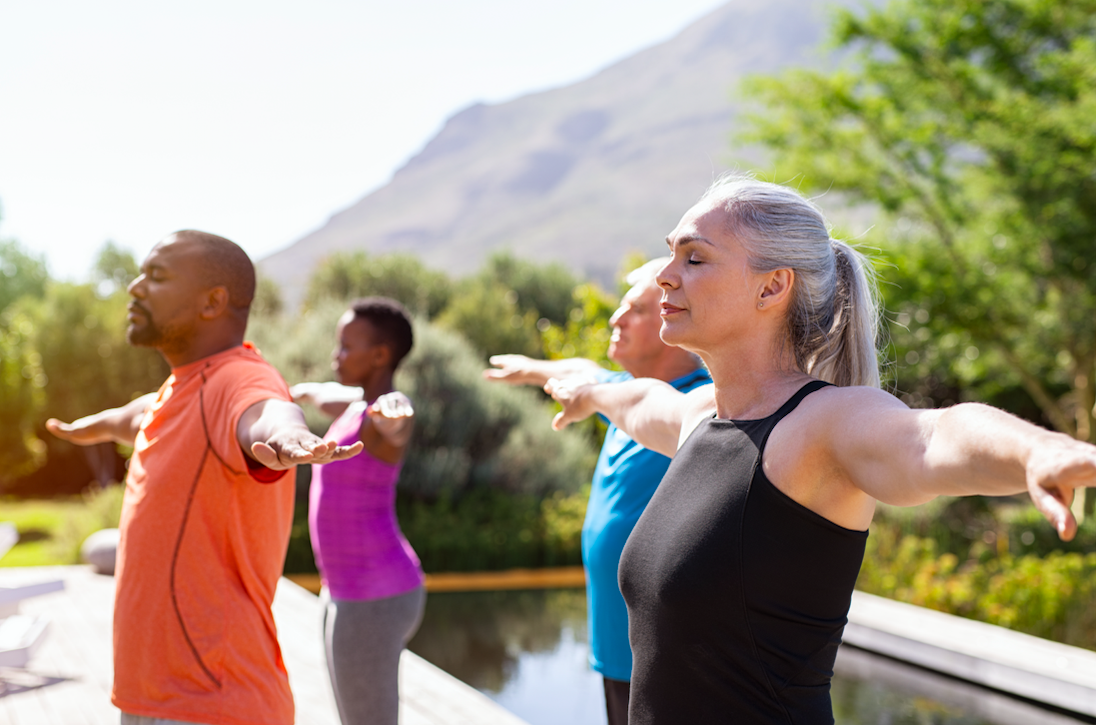
In our first post, we briefly mentioned how bad posture, neck pain, and respiratory function are all related. This relationship is worth a closer examination, too, as improving the way you breath is a key to better posture, reduced pain, and less stress.
A brief overview of breathing and posture
At first glance, posture and breathing may seem like separate bodily functions of the body. But when you understand how each one works, you can see that they are deeply interconnected, and that the health of one function can directly impact the other.
The diaphragm is the main muscle of respiration. It’s a dome–shaped muscle located between the chest and abdomen that contracts and relaxes during different points of the breathing cycle. When you take a breath in, the diaphragm contracts until it becomes flat to create room in the chest cavity for the lungs to expand, which lifts the ribs outward. Intercostal muscles, located between the ribs, also assist the diaphragm by elevating the ribcage to allow more air into your lungs. When you exhale, the diaphragm relaxes and assumes its full dome shape, while the ribcage contracts and returns to its original resting state.
Poor posture, especially when seated, keeps the diaphragm compressed and prevents it from opening fully when breathing. Similarly, rounded shoulders and a forward head posture can cause the muscles around the chest to tighten. This limits the ribcage from expanding completely and causes people to take more rapid, shallow breaths.
There is also potential for a vicious cycle to develop between posture and breathing. Breathing from the chest relies on secondary muscles in the neck and collarbone instead of the diaphragm, and when this breathing pattern occurs along with poor posture, it can weaken many muscles in the upper body and prevent them from functioning properly. Having weak core and upper back muscles makes it more difficult to practice good posture, and these two forces continue to impact one another in a cyclical fashion. Over time, this can lead to the development of many of the painful conditions we’ve described, such as neck, back, or shoulder pain.
Deep breathing and other techniques to improve breathing patterns
Since breathing and posture are so closely intertwined, taking steps to improve one of these functions will likely have a positive impact on the others and lead to several other benefits as well. Keeping a slow, steady breathing pattern has been found to enhance core stability, improve tolerance to high–intensity exercise, and reduce the risk for muscle fatigue and injury. Paying more attention to your breath may also improve sleep habits and alleviate stress and anxiety, since breath focus is considered a common feature in several techniques intended to put one in a state of calm. Below are a few examples of breathing techniques and other exercises that can help you take better control of your breath and posture:
- Deep breathing: sit somewhere comfortable, relax your shoulders and inhale slowly to fill your lungs completely; then exhale slowly, emptying the lungs completely
- Pursed lip breathing: breathe in through the nose, then breathe out through the mouth with pursed lips while making the exhaled breath twice as long as the inhaled breath
- Box breathing: breathe in through the nose for four seconds, filling the lungs, then hold the breath in the lungs for another four seconds; next, breathe out slowly through the mouth for four seconds, emptying the lungs fully, then wait another four seconds before breathing in again
- Flexibility and resistance exercises: these exercises help realign posture and train the body to breathe better
- Traditional quadriceps stretch: bend your right knee and reach behind to grab your right foot with your right hand and bring it to your buttocks; try to keep your knees aligned throughout this stretch
- Head–to–hand neck release: in cross–legged position, bring your right ear toward the right shoulder, then lift your left arm to your shoulders and spread your fingers with palms facing up; place your right hand lightly on top of your head and apply slight pressure; retract the left shoulder blade toward the spine and hold the posture; repeat on the other side
- Wall chest stretch: face a wall and place your hands on the wall at shoulder height; walk your feet and push your hips back so your torso is parallel to the floor; keep the toes pointed forward and the feet under the pelvis; you should feel a stretch in the back of the legs and chest muscles
In our next and final post, we’ll show you why physical therapy may be necessary to if you want to commit to improving your posture.
